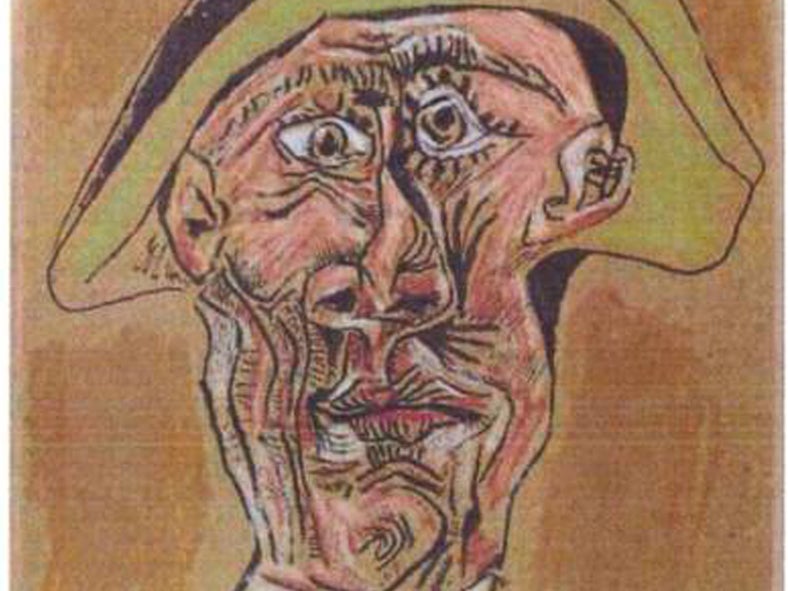Stolen Picasso painting found in Romania turns out to be prank
Belgian theatre company blamed for hoax

A writer who thought she had found a stolen Picasso painting appears to have been the victim of a prank.
Mira Feticu thought she had discovered the Tete d’Arlequin (Harlequin’s Head) hidden under a tree in Romania’s Tulcea county, almost six years after it was stolen in October 2012.
The £700,000 painting was taken from Rotterdam’s Kunsthal museum by three men who stormed through the emergency exit doors and grabbed seven paintings thought to be worth up to £160m, by Picasso, Monet, Matisse, Gauguin, and Lucian Freud.
Four Romanians were convicted of the theft in 2013 but nothing had been heard of the artworks since then. The mother of one of the men convicted claimed she had destroyed the works after his arrest – a statement she later retracted.
Over the weekend, Ms Feticu, of Romanian origin, thought she had found the Tete d’Arlequin. She said she had received an anonymous letter that led her to a forest in east Romania where she dug up an artwork wrapped in plastic. She handed it to the Dutch embassy, which said it was possible that it was the real thing.
But on Sunday night, Ms Feticu told the Dutch public broadcaster NOS that the discovery was part of a “performance” by two Belgian directors in Antwerp.
She said she received an email explaining that they were running a project called “True Copy”, dedicated to the notorious art forger Geert Jan Jansen.
The trick appears to have been linked to a play that the company is performing in Antwerp, which deals with “the inherent question of the value of truth”.
The company said on its website: “Part of this performance was prepared in silence in the course of the past few months, with a view to bringing back Picasso’s Tête d’Arlequin.”

Frank Westerman, a Dutch journalist who accompanied Ms Feticu to Tulcea county, wrote on Facebook that “the supposed lost Picasso was put there by two Belgian theatre makers”.
And instead of helping to discover the real thing, he wrote that he had simply ended up in a play.
Additional reporting by agencies
Join our commenting forum
Join thought-provoking conversations, follow other Independent readers and see their replies
Comments